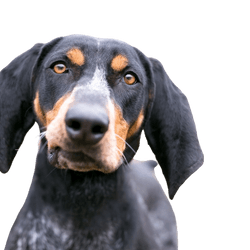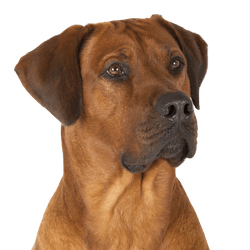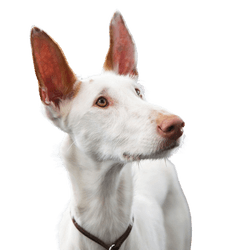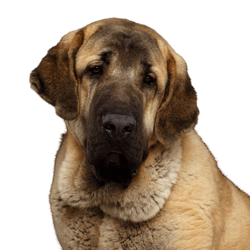
Irish Red Setter Breed description: Character & Co
Irish Red Setter
Facts & Origin
The Irish Red Setter is an elegant looking hunting dog that enjoys great popularity due to its friendly nature and graceful appearance.
Origin and use of the Irish Red Setter
The Irish Red Setter originates from Ireland. The breed originated in the 19th century when Irish red and white Setters were crossed with British Pointers and French Spaniels. The goal was to breed a hunting dog that could track down wild birds. The dog's talent is already evident from its name. The name Setter is derived from the English word "to set", which can be translated as "to set". The Irish Red Setter stalks game animals and then quietly sits down so the hunter can shoot the prey. To this day, the breed is primarily used as a hunting dog.
Breed characteristics of the Irish Red Setter
The Irish Red Setter was officially recognized by the FCI in 1954. The breed is classified in group 7 "Pointing Dogs", section 2 "British and Irish Pointing Dogs", subsection 2 "Setters".

| Alternate Name | - |
| Origin | Ireland |
| Life expectancy | 12 - 15 years |
| Care requirements | high-maintenance |
| Activity level | average to high |
| FCI group | British and Irish Pointers and Setters |
| AKC group | not recognised |
| KC group | not recognised |
Attitude, character and temperament of the breed
Typical Characteristics of the Irish Red Setter
The Irish Red Setter has a strong personality and a multi-faceted character. In nature and at work as a hunting dog he shows himself to be
- intelligent
- interested
- persevering
- energetic
- spirited
- enthusiastic
- alert
- independent
- full of zest for action
Once the Irish Red Setter has done his work and has had enough exercise, he shows further positive character traits in the house. Towards his family he is
- friendly
- affectionate
- faithful
- affectionate
- cuddly
- playful
- docile
Character
Usage

Health and breeding information
Typical diseases of the Irish Red Setter
The Irish Red Setter is not particularly susceptible to disease. Hereditary diseases of the breed include CLAD (high susceptibility to infection) and PRA (retinal disease leading to blindness). Hip deformities, epilepsy, andgastric torsion are slightly more common than in other dog breeds.
Husbandry of the Irish Red Setter
The Irish Red Setter is a very active and exercise-loving dog that requires two to three hours of exercise daily. It enjoys spending time in nature and the woods, making it the perfect companion for hunters. As a non-hunter, you should provide your dog with long walks and meaningful activity to meet its needs. Your human-friendly four-legged friend can be trained very well with a little patience and consistency and needs family connection. It is not suitable for keeping in a kennel.
Breeding the Irish Red Setter
If you want to buy an Irish Red Setter puppy, you should contact a breeding club. They can help you get in touch with a reputable breeder in your area who can give you more information about the breed. You can take in a puppy at the earliest when it is eight weeks old.

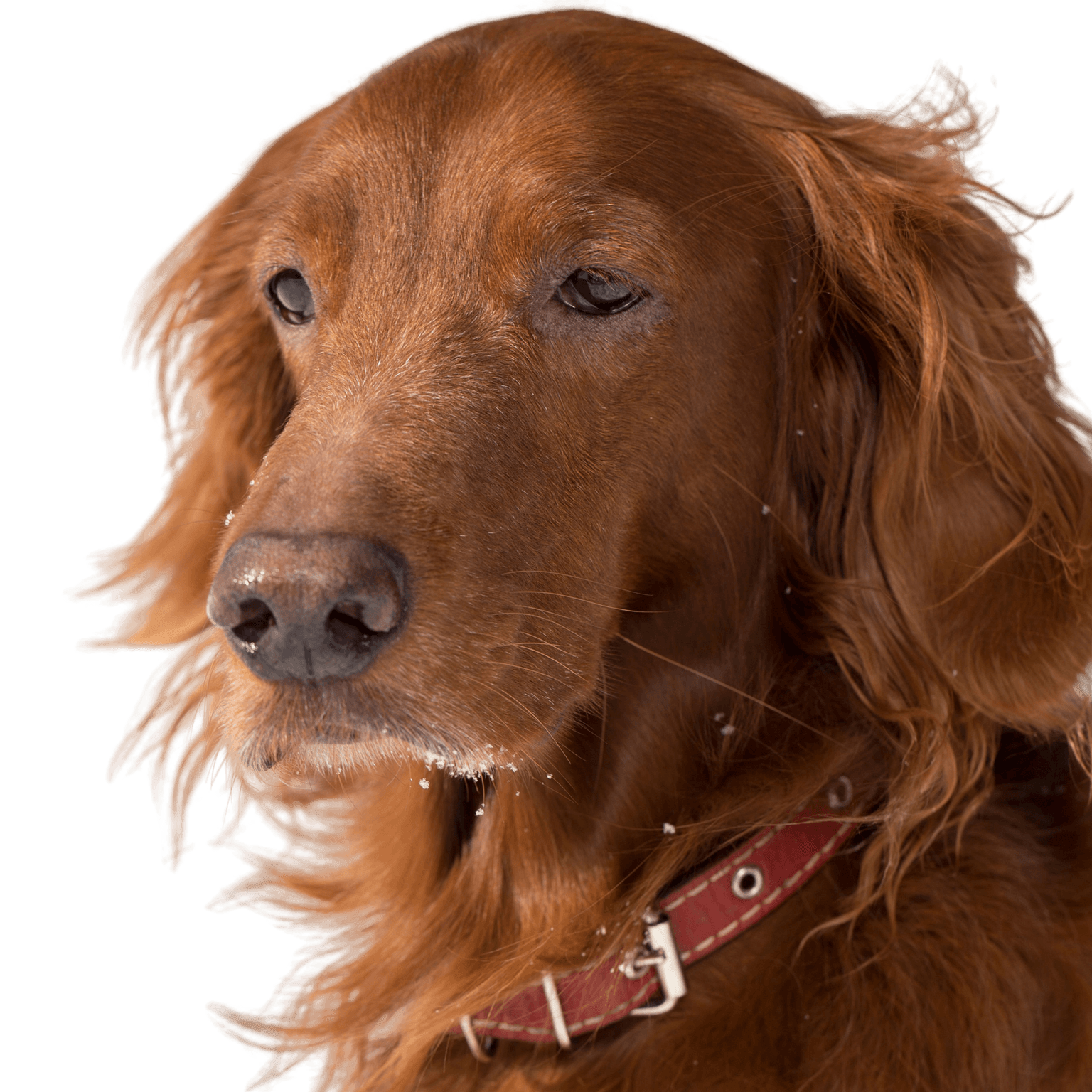
Appearance and coat of the Irish Red Setter
The Irish Red Setter is an athletic and robust looking dog. Its physique can be described as follows:
- long, slender head
- medium sized ears, which are set far back
- dark brown eyes
- dark nose with wide open nostrils
- muscular neck
- deep chest
- low set tail of moderate length
- muscular legs
- small, strong paws
The coat of the Irish Red Setter is of medium length, smooth, flat lying and chestnut brown. There may be white patches or stripes on the chest, neck, face, or toes.
Size of the Irish Red Setter
The Irish Red Setter is one of the medium-sized dog breeds. Males reach a shoulder height of 58 to 67 cm. Bitches are slightly smaller and measure 55 to 62 cm at the shoulder.
Weight of the Irish Red Setter
A fully grown male dog weighs 27 to 32 kg. Bitches are somewhat lighter and reach a weight of 24 to 29 kg.
Age of the Irish Red Setter
If kept and cared for properly, the Irish Red Setter can live from 12 to 15 years.
| Fur length | medium |
| Fur | wavy |
| Ear shape | Floppy Ear |
| Tail | fanned out |
| Anatomy | rugged |
| Size ♀ | 55 - 62 cm |
| Weight ♀ | 24 - 29 kg |
| Size ♂ | 58 - 67 cm |
| Weight ♂ | 27 - 32 kg |
| Suitable For | - |
Colors


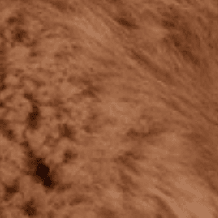
Known Diseases
Epilepsy
Definition: Dog has epilepsy if, for example, at least two epileptic seizures occur more than 24 hours apart.
Hip dysplasia (HD)
The hip dysplasia or hip joint dysplasia of the dog (HD) is a maldevelopment of the hip joint.
Gastric torsion
Gastric torsion is a disease in which the stomach rotates around its own longitudinal axis. The cause of the disease is not known.
Other large dogs
Useful Articles
You can find articles that might interest you in the dogbible blog to match your favorite breed.
Visit our magazineto stay up to date on dog trends.
To find out more, view our Privacy Policy
Find here the breed that suits you and find out what character traits it has. Here you can also learn more about the origin, size and weight of your favorite breeds.
Matching your favorite breed, you'll find articles that might interest you on the dogbible dog blog.
First vaccinations for the puppy - Legal situation, What vaccinations are good and important
Cancer in dogs - cause, diagnosis, prevention of cancer in dogs
Second dog: This is what you have to consider when introducing each other
Safely on four paws through the darkness
Tattoos with dog theme: We have the cutest net finds for you



